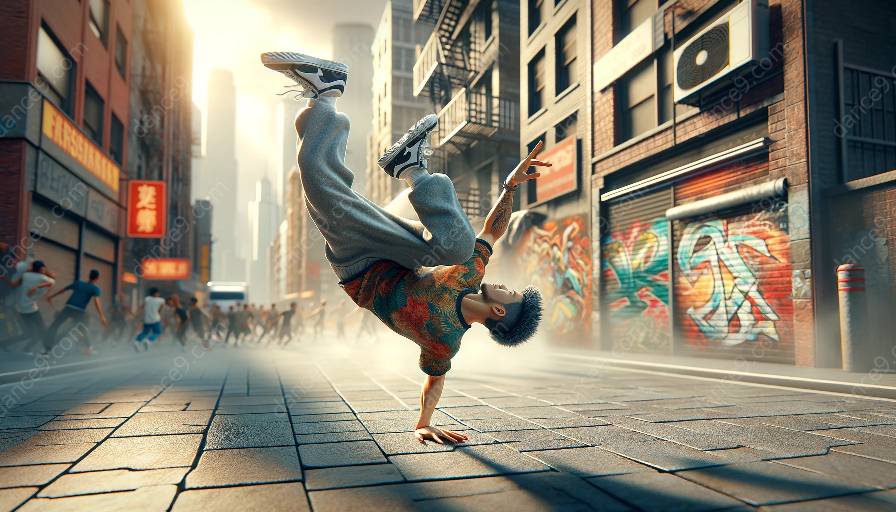Breakdancing and contemporary choreography are two dynamic dance forms that have captivated audiences worldwide. In this comprehensive topic cluster, we will explore the rich history, techniques, and influence of these dance styles. From the streets to the stage, breakdancing has evolved into a global phenomenon, while contemporary choreography continues to push creative boundaries in the world of dance classes.
The History of Breakdancing
Breakdancing, also known as breaking, originated in the Bronx, New York City, during the 1970s. It was deeply rooted in hip-hop culture and was initially popularized by African American and Latino youth. Breakdancing gained momentum through underground dance battles, block parties, and inner-city neighborhoods, eventually spreading across the globe.
Techniques and Elements of Breakdancing
Breakdancing encompasses a diverse range of athletic and acrobatic movements, including footwork, freezes, power moves, and spins. B-boys and B-girls, the practitioners of breakdancing, showcase their skills through intricate footwork patterns, dynamic body movements, and mesmerizing power moves that emphasize strength and agility.
The Influence of Breakdancing
Breakdancing has influenced various aspects of popular culture, including music, fashion, and media. Its impact can be seen in music videos, commercials, and blockbuster films, where breakdancing has become synonymous with urban expression and creativity.
Contemporary Choreography in Dance Classes
Contemporary choreography represents a fluid and expressive form of dance that continually evolves and challenges traditional movements. It often blends elements of modern, jazz, and ballet techniques with an emphasis on creativity, improvisation, and emotional storytelling.
Pushing Boundaries and Creative Expression
Contemporary choreography pushes the boundaries of movement and artistic expression, inviting dancers to explore their physicality and emotions. Within dance classes, contemporary choreography encourages dancers to embrace experimentation, collaboration, and individuality, fostering a creative and inclusive environment.
Combining Breakdancing and Contemporary Choreography
As the world of dance continues to evolve, the fusion of breakdancing and contemporary choreography has given rise to innovative and captivating performances. Dancers merge the raw energy and athleticism of breakdancing with the fluidity and emotional depth of contemporary choreography, creating a dynamic and visually stunning synthesis of movement and expression.
Learning Breakdancing and Contemporary Choreography in Dance Classes
Whether you're a beginner or seasoned dancer, exploring breakdancing and contemporary choreography in dance classes offers a unique opportunity to expand your skills and creativity. With experienced instructors and supportive communities, dance classes provide a platform for individuals to learn, grow, and express themselves through these captivating dance forms.
Conclusion
Breakdancing and contemporary choreography represent two distinct yet interconnected styles that have left an indelible mark on the world of dance. From their rich histories and techniques to their influence and intersection in dance classes, these dynamic forms of movement continue to inspire, captivate, and unite dancers and audiences alike.













































































